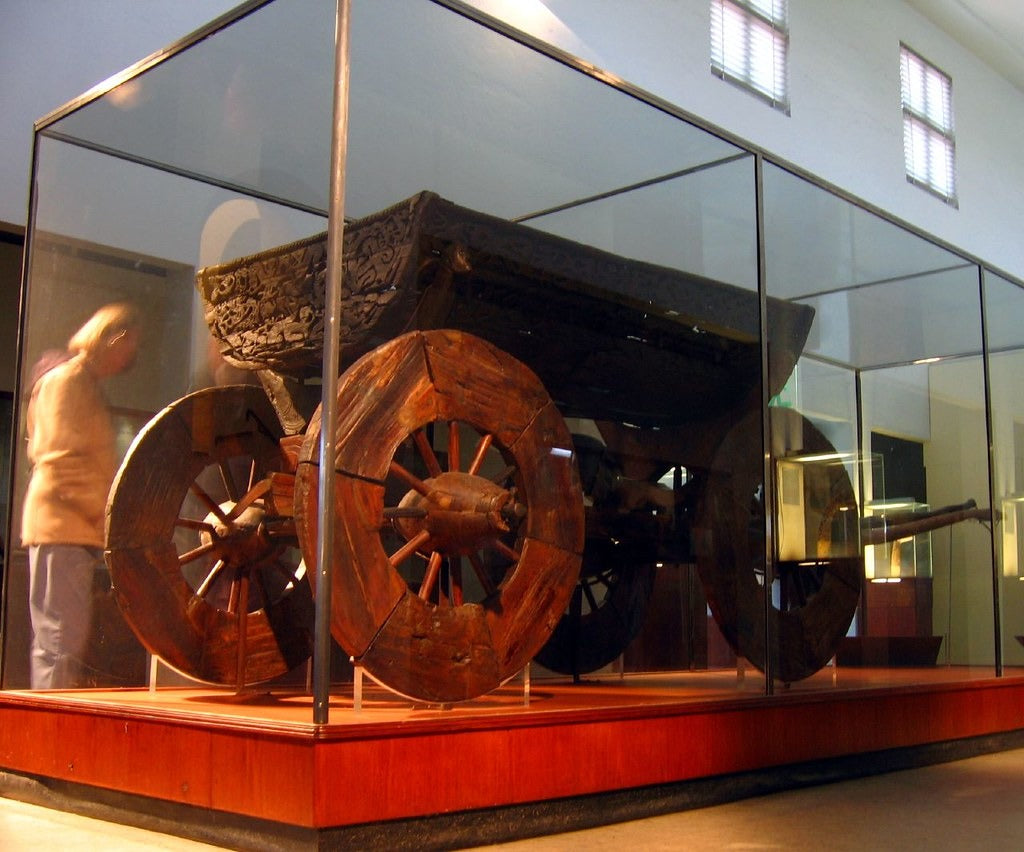
Potential Viking Marketplace Discovered at Utstein Monastery in Norway
In a fascinating turn of events, archaeologists have uncovered evidence suggesting the presence of a Viking Age marketplace on a small Norwegian island. This discovery is reshaping our understanding of the area's historical significance and shedding new light on Viking-era commerce. Let's dive into the details of this exciting find!
The Discovery: Unveiling Ancient Structures
Our story unfolds on Klosterøy, a tiny island off Norway's southern tip, approximately 200 miles from Oslo. This isle is already renowned for hosting Norway's best-preserved medieval monastery, Utstein Monastery, and several Iron Age burials. But recent findings suggest its historical importance may stretch back even further into the mists of time.
Key Findings: Pit Houses and Piers
In late 2023, archaeologists from the Norwegian University of Stavanger's Museum of Archaeology made a groundbreaking discovery. Using advanced technology, they identified a cluster of pit houses and piers that could date back to the Viking Age, roughly 1,000 years ago.
Håkon Reiersen, an archaeologist at the museum, explains the significance: "We have received numerous metal detector finds from [the monastery] in recent years, including items associated with trade such as weights and coins. One of the things we wanted to investigate... was whether there could be additional traces of trade activity."
The Power of Ground-Penetrating Radar
Given that Utstein Monastery is a legally protected historic site, traditional excavation methods were off the table. Instead, the research team turned to ground-penetrating radar, a non-invasive technique that allows archaeologists to "see" beneath the surface without disturbing the soil.
The radar scans revealed several man-made structures, including large pits similar in size and shape to Viking Age pit houses found elsewhere in Norway. Kristoffer Hillesland, another archaeologist at the museum, offers insight into these structures: "The construction makes them cool in the summer and warm during winter. A common interpretation of pit houses is that they served as workshops associated with craftsmanship."
In addition to the pit houses, the team identified cooking pits, cultivated soil layers, and the foundations of three piers or boathouses near the shoreline. Hillesland suggests that "vessels may have docked at these piers to access the Viking market during warmer months."
Historical Context: From Iron Age to Viking Era

Klosterøy's location (red) in Norway
The recent discoveries add another layer to Klosterøy's already rich history. Hillesland notes that the island was likely a "power center" during the region's Iron Age, which lasted from 500 B.C.E. until 800 C.E. This theory is supported by the presence of several nearby "cairns" - stone mounds that could mark Iron Age burials.
As the Iron Age gave way to the Viking Era in the 9th century, Klosterøy's role seems to have evolved. The marketplace may have been established during the late 800s, coinciding with the reign of Norway's first king, Harald Fairhair. Intriguingly, Fairhair built a royal farm on Klosterøy, further underlining the island's importance.
It wasn't until the late 13th century that Augustinian monks established the monastery that still stands today, building upon the site's long history of significance.
Significance of the Discovery
This potential marketplace could revolutionize our understanding of Viking trade networks in this part of Norway. It suggests that Klosterøy was a significant commercial hub centuries before the monastery's construction, raising fascinating questions about the island's role in Viking-age Norway and its connections to other trading centers across Europe.
Utstein's Role in Norwegian History
Reiersen expresses his excitement about the findings: "I am therefore not surprised that the results now indicate that Utstein was indeed a marketplace in the Viking Age and early Middle Ages." This discovery adds yet another chapter to Utstein's already impressive historical narrative.
Potential for Further Investigation
While these findings are exciting, the researchers caution that they can't verify the marketplace's presence without additional analysis. The team is likely to continue their non-invasive investigations, potentially uncovering more secrets hidden beneath Klosterøy's soil.
The legally protected status of the site presents both a challenge and an opportunity. While it may limit physical excavations, it ensures the preservation of this invaluable historical resource for future generations.
Conclusion: Reimagining Klosterøy's Past
The potential discovery of a Viking marketplace at Utstein Monastery is more than just an interesting footnote in a history book. It's a window into a vibrant, complex society that continues to captivate our imagination centuries later.
This find reminds us that history is not static – it's a living, breathing thing that continues to evolve as we uncover new evidence. From Iron Age power center to Viking marketplace, from royal farm to medieval monastery, Klosterøy has worn many hats throughout its long history. Who knows what other secrets this tiny Norwegian island might still be hiding?
As we continue to piece together the puzzle of Viking history, discoveries like this one at Utstein Monastery remind us of the complex, interconnected world our ancestors inhabited. They challenge us to look beyond the stereotypes and see the Vikings as they truly were: not just warriors, but traders, craftspeople, and builders of complex societies.
References
Gershon, L. (2024, March 4). Archaeologists may have found traces of a Viking marketplace in Norway. Smithsonian Magazine. https://www.smithsonianmag.com/smart-news/archaeologists-found-traces-viking-marketplace-norway-180983886/
Visit Norway. (n.d.). The Utstein Monastery. Retrieved June 18, 2024, from https://www.visitnorway.com/places-to-go/fjord-norway/the-stavanger-region/listings-stavanger/the-utstein-monastery/8613/
Georgiou, A. (2024, March 1). Unique Viking Age marketplace uncovered on farm, archaeologists suspect. Newsweek. https://www.newsweek.com/unique-viking-age-marketplace-uncovered-farm-archaeologists-suspect-1871330
"Norway - Klosterøy" by Jay1279 is marked with CC0 1.0.
"Utstein Abbey" by L.C.Nøttaasen is licensed under CC BY 2.0.








